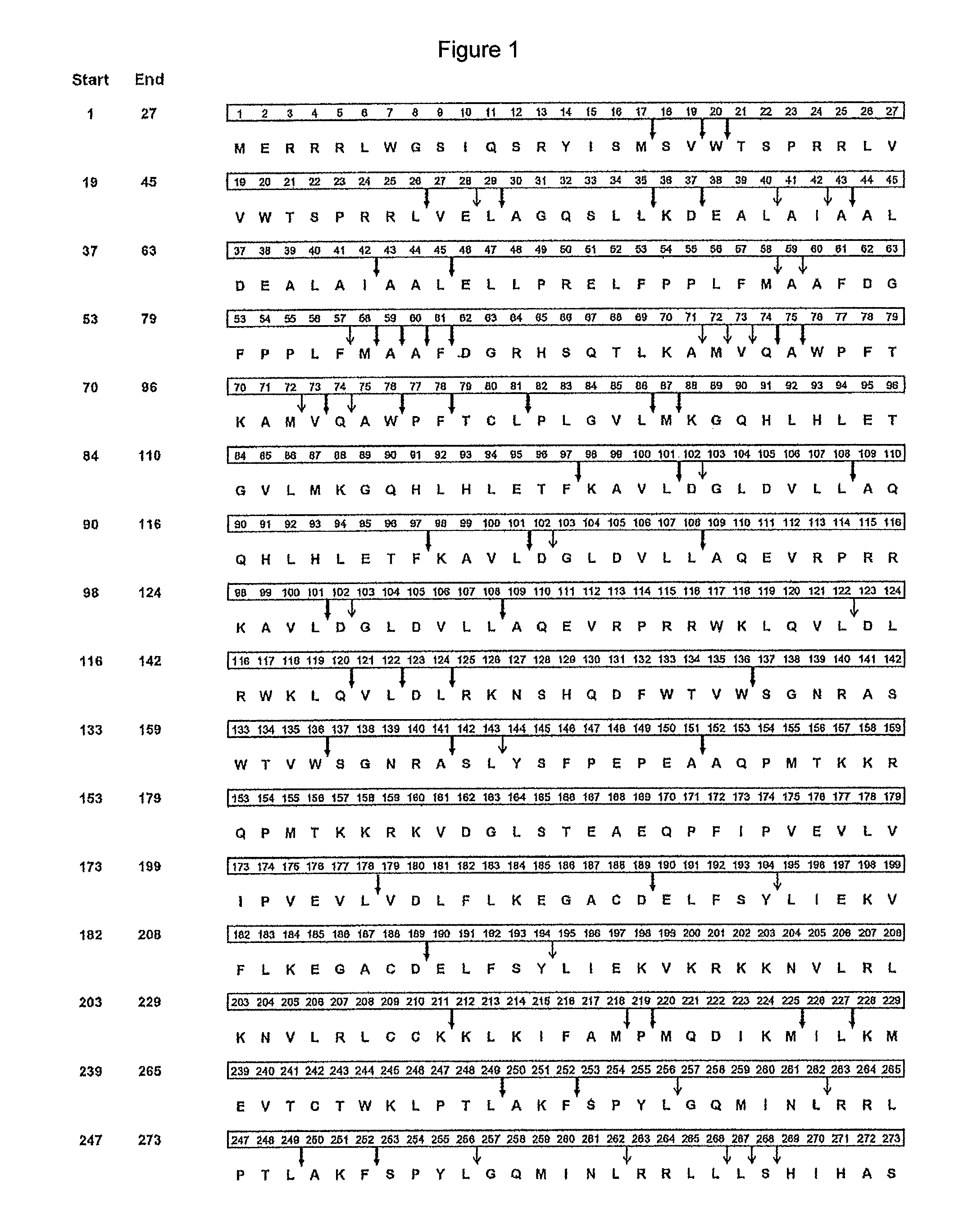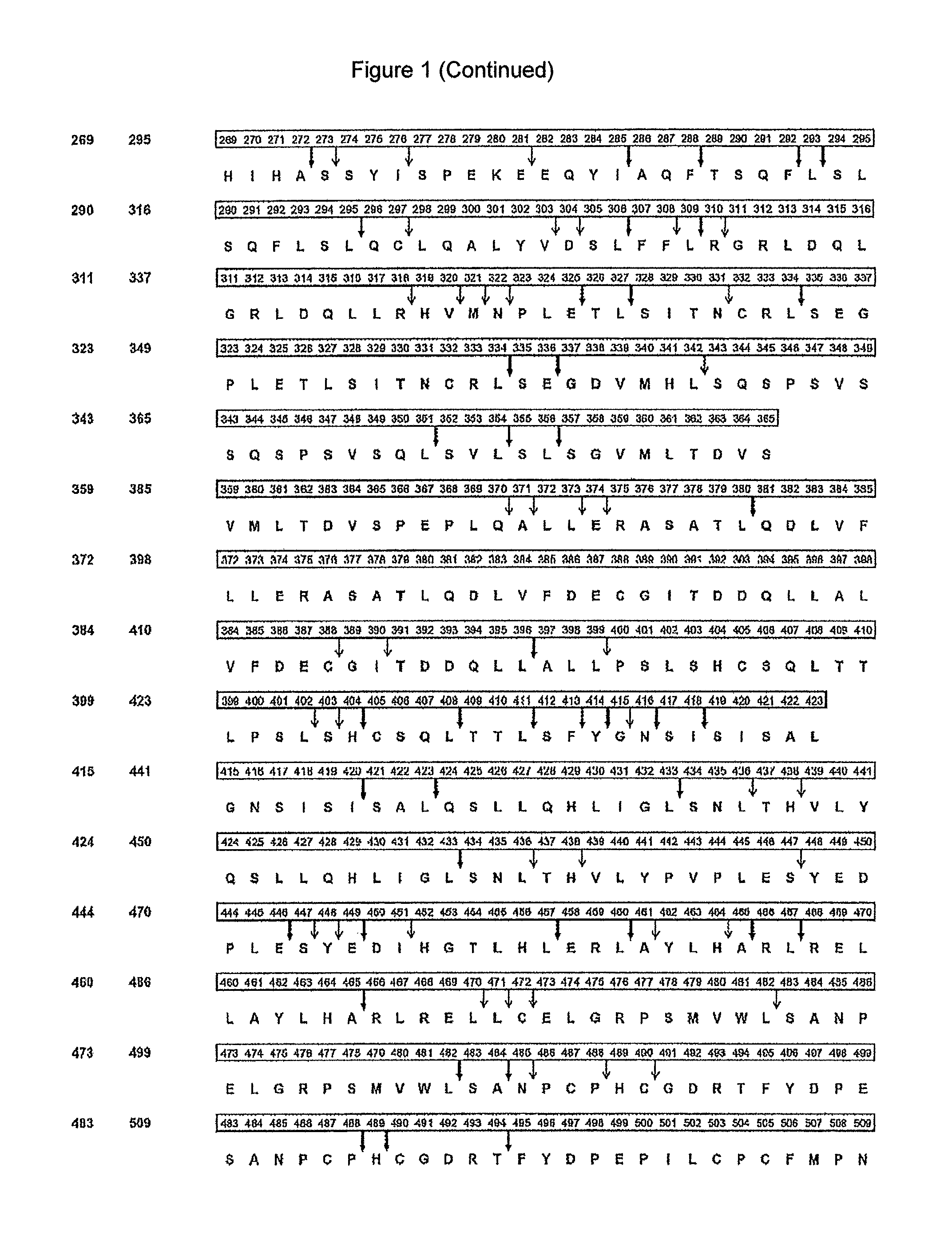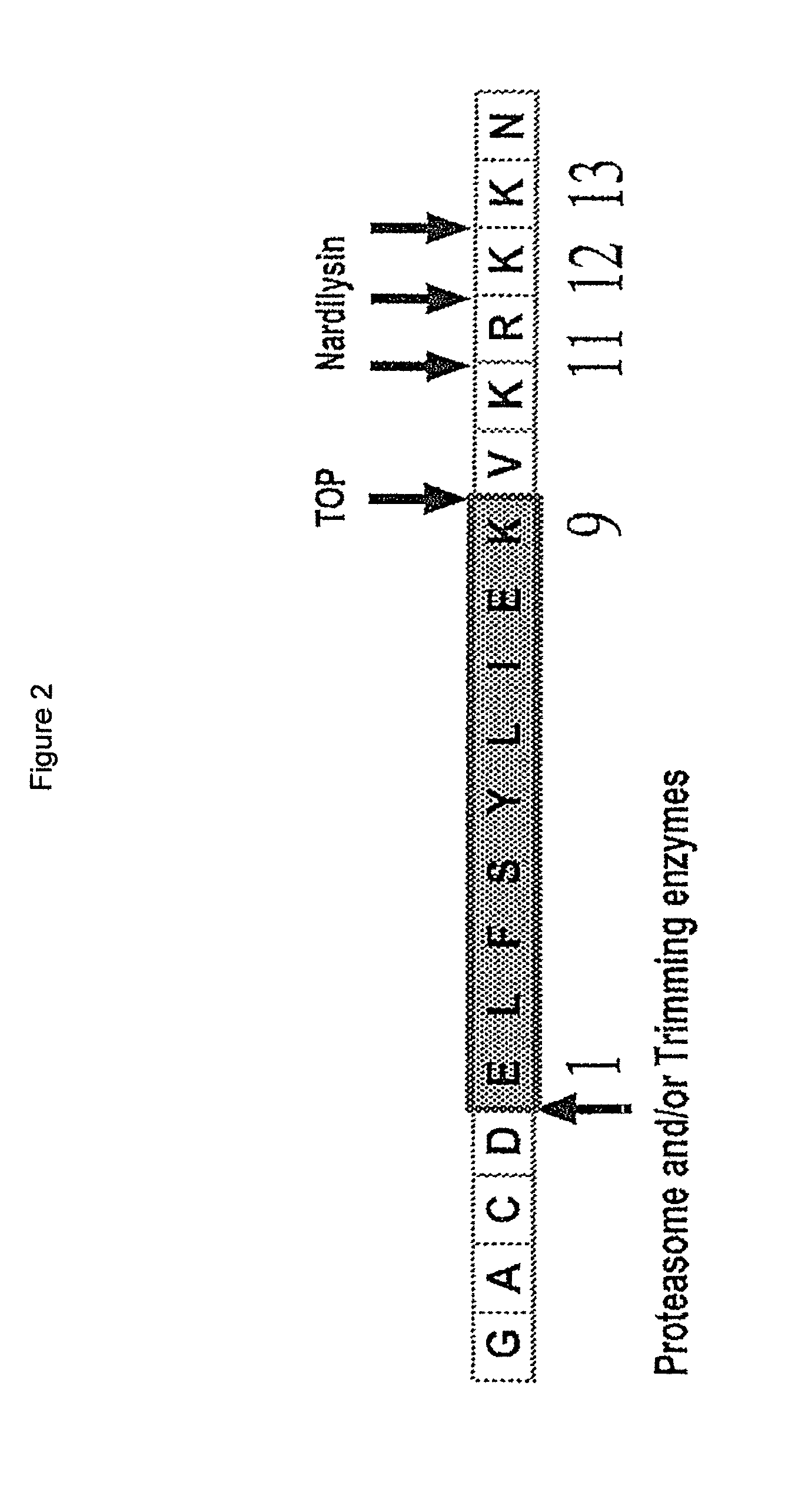PRAME derived peptides and immunogenic compositions comprising these
a technology of peptides and peptides, which is applied in the field of medicine and immunology, can solve the problems of not providing data as to whether these epitopes and peptides are actually capable, and achieve the effects of prolonging the improving the effect of cd8+ ctl effector and memory respons
- Summary
- Abstract
- Description
- Claims
- Application Information
AI Technical Summary
Benefits of technology
Problems solved by technology
Method used
Image
Examples
example 1
Identification of HLA Class I Presented Peptides from PRAME Synthetic Production of Peptides
[0046]All peptides used in these studies were synthesized by solid phase strategies on an automated multiple peptide synthesizer (Abimed AMS 422) using standard Fmoc chemistry. Short peptides for CTL inductions were dissolved in 20 μl DMSO, diluted in 0.9% NaCl to a peptide concentration of 1 mg / ml and stored at ±20° C. before usage. The fluorescein-labeled reference peptides, used in the HLA class I peptide binding assays, were synthesized as Cys-derivative. Labeling was performed with 5-(iodoacetamido)fluorescein (Fluka Chemie AG, Buchs, Switzerland) at pH 7.5 (Na-phosphate in water / acetonitrile 1:1 v / v). The labelled peptides were desalted over Sephadex G-10 and further purified by C18 RP-HPLC. Labelled peptides were analysed by mass spectrometry. The 27-mer and 22-mer polypeptides used for in vitro proteasome digestion analysis and analysis of CD4+ Th lymphocyte reactivity were synthesize...
example 2
Determination of Proteasomal Cleavage Sites in Full Length PRAME Materials and Methods In Vitro Proteasome Mediated Cleavage Analysis
[0056]20S proteasomes were purified from a B-LCL cell line as described by Groettrup et al. (J. Biol. Chem. 270:23808-23815; 1995). This cell type is known to contain immunoproteasomes. High LMP2 and 7 content was confirmed by 2-D immuno-blotting. To assess kinetics, digestions were performed with different incubation periods. Peptides (27 mers, 20 μg) were incubated with 1 μg of purified proteasome at 37° C. for 1 h, 4 h and 24 h in 300 μl proteasome digestion buffer as described (Eggers, et al. 1995. J. Exp. Med. 182:1865). Trifluoroacetic acid was added to stop the digestion and samples were stored at −20° C. before mass spectrometric analysis.
[0057]Electrospray ionization mass spectrometry was performed on a hybrid quadrupole time-of-flight mass spectrometer, a Q-TOF (Micromass), equipped with an on-line nanoelectrospray interface with an approxima...
example 3
Non-Proteasomal Cleavages are Required to Generate the C-Terminus of proteasome-independent HLA-A3-presented CTL epitope PRAME 190-198
[0062]Some occasional CTL epitopes, mostly with a basic residue at their C-terminus, require non-proteasomal cleavages, by additional enzymes, to liberate their C-terminus (Tenzer et al., 2005; Cell. Mol. Life Sci 62:1025 and Seifert et al., 2003, Nat. Immunol. 4:375). The current invention includes one such a CTL epitope, position 190-198 in PRAME with aa. sequence ELFSYLIEK, of which the C-terminus is generated independently of the proteasome by two consecutive cleavages of Nardilysin (EC 3.4.24.61) and Thimet oligopeptidase (TOP; EC 3.4.24.15).
[0063]In addition to its involvement in the production of the ELFSYLIEK epitope, Nardilysin was predicted to efficiently produce by a direct cleavage the C-termini of the HLA-A3 binding peptide PRA16-24 (SMSVWTSPR), the HLA-A68 binding peptides PRA150-158 and PRA150-159 (EAAQPMTKK and EAAQPMTKKR), the HLA-A24...
PUM
| Property | Measurement | Unit |
|---|---|---|
| concentration | aaaaa | aaaaa |
| pH | aaaaa | aaaaa |
| concentration | aaaaa | aaaaa |
Abstract
Description
Claims
Application Information
 Login to View More
Login to View More - R&D
- Intellectual Property
- Life Sciences
- Materials
- Tech Scout
- Unparalleled Data Quality
- Higher Quality Content
- 60% Fewer Hallucinations
Browse by: Latest US Patents, China's latest patents, Technical Efficacy Thesaurus, Application Domain, Technology Topic, Popular Technical Reports.
© 2025 PatSnap. All rights reserved.Legal|Privacy policy|Modern Slavery Act Transparency Statement|Sitemap|About US| Contact US: help@patsnap.com



